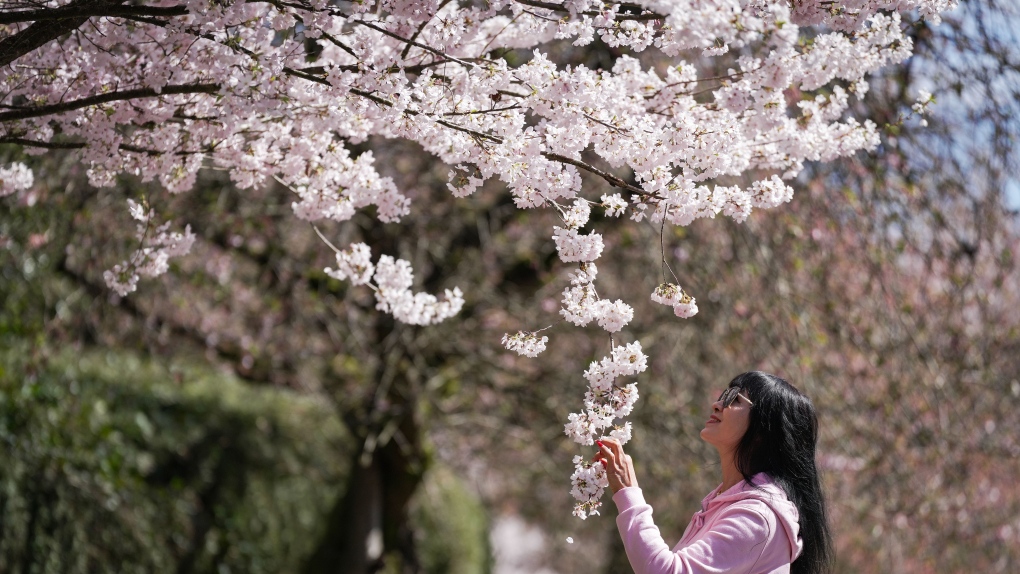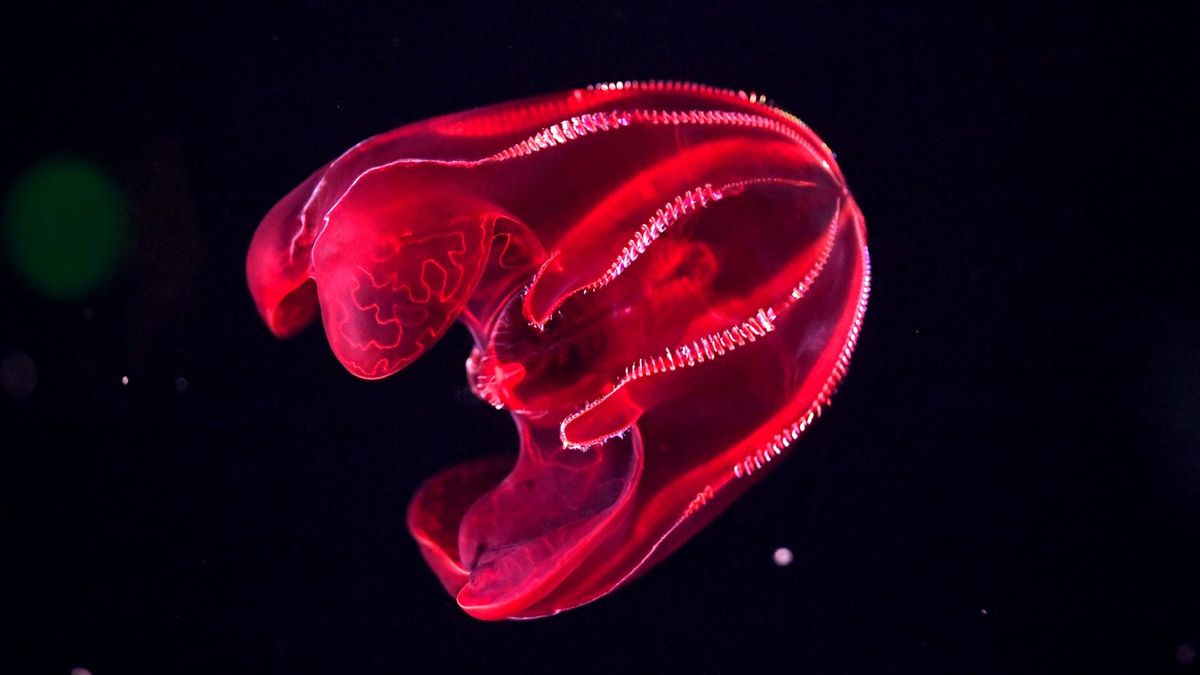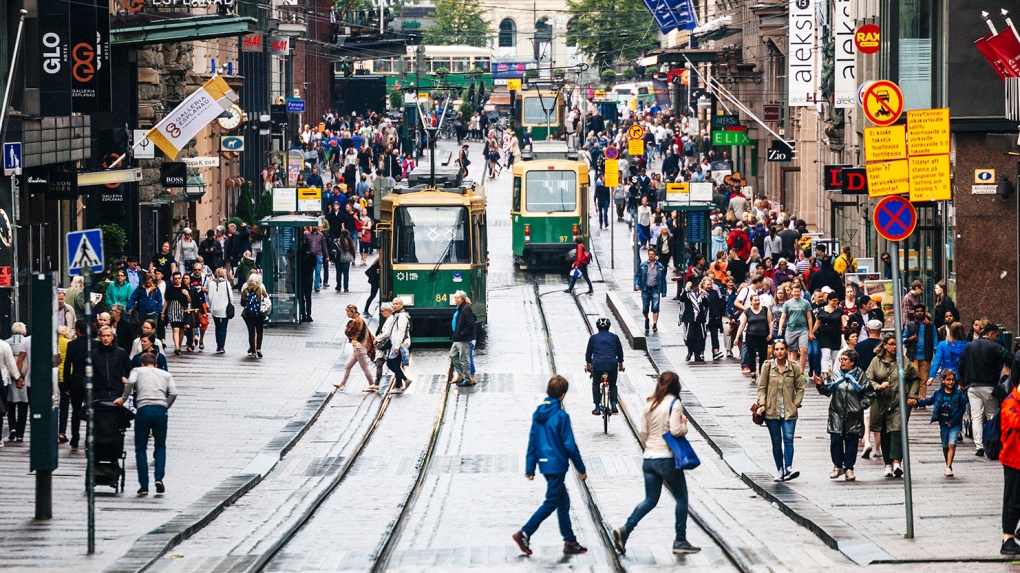
CNN
Updated March 20, 2023
There's cause for optimism in the latest report on world happiness.
For one, benevolence is about 25% higher than it was pre-pandemic.
"Benevolence to others, especially the helping of strangers, which went up dramatically in 2021, stayed high in 2022," John Helliwell, one of the authors of the World Happiness Report, said in an interview with CNN.
And global happiness has not taken a hit in the three years of the COVID-19 pandemic. Life evaluations from 2020 to 2022 have been "remarkably resilient," the report says, with global averages basically in line with the three years preceding the pandemic.
"Even during these difficult years, positive emotions have remained twice as prevalent as negative ones, and feelings of positive social support twice as strong as those of loneliness," Helliwell said in a news release.
The report, which is a publication of the UN Sustainable Development Solutions Network, draws on global survey data from people in more than 150 countries. Countries are ranked on happiness based on their average life evaluations over the three preceding years, in this case 2020 to 2022.
The report, which was released on Monday, identifies the happiest nations, those at the very bottom of the happiness scale and everything in between, plus the factors that tend to lead to greater happiness. March 20 is the International Day of Happiness, a day designated by the United Nations that's marking its 10th anniversary in 2023.
Six-year winning streak for world's happiest nation
For the sixth year in a row, Finland is the world's happiest country, according to World Happiness Report rankings based largely on life evaluations from the Gallup World Poll.
The Nordic country and its neighbours Denmark, Iceland, Sweden and Norway all score very well on the measures the report uses to explain its findings: healthy life expectancy, GDP per capita, social support, low corruption, generosity in a community where people look after each other and freedom to make key life decisions.
But since we can't all move to Finland, is there something other societies can learn from these rankings?
"Is it, are they doing things that we wish we'd seen before and we can start doing? Or is it something unique about their climate and history that make them different? And fortunately, at least from my perspective, the answer is the former," said Helliwell, who is a professor emeritus at the Vancouver School of Economics, University of British Columbia.
Taking a holistic view of the well-being of all the components of a society and its members makes for better life evaluations and happier countries.
"The objective of every institution should be to contribute what it can to human well-being," the report says, which includes accounting for future generations and preserving basic human rights.
Israel moves up to No. 4 this year from its No. 9 ranking last year. The Netherlands (No. 5), Switzerland (No. 8), Luxembourg (No. 9) and New Zealand (No. 10) round out the top 10.
Australia (No. 12), Canada (No. 13), Ireland (No. 14), the United States (No. 15) and the United Kingdom (No. 19) all made it into the top 20.
While the same countries tend to appear in the top 20 year after year, there's a new entrant this year: Lithuania.
The Baltic nation has been climbing steadily over the past six years from No. 52 in 2017 to No. 20 on the latest list. And the other Baltic countries, Estonia (No. 31) and Latvia (No. 41), have been climbing in the ranks, too.
"It's essentially the same story that's playing out in the rest of Central and Eastern Europe," Helliwell said.
Countries in those regions "probably have normalized that post-1990 transition and [are] feeling more solid in their new identity" as the years pass, he said.
France dropped out of the top 20 to No. 21 in this year's report.
Nations ranked lower for happiness
At the very bottom of the list is Afghanistan at No. 137. Lebanon is one rank above at No. 136. Average life evaluations in these countries are more than five points lower (on a scale from 0 to 10) than in the 10 happiest countries.
Russia's invasion of Ukraine put both countries very much in the global spotlight as the 2022 report was released.
So where do these two nations stand, according to the latest surveys?
Well-being in Ukraine has definitely taken a hit, but "despite the magnitude of suffering and damage in Ukraine, life evaluations in September 2022 remained higher than in the aftermath of the 2014 annexation, supported now by a stronger sense of common purpose, benevolence, and trust in Ukrainian leadership," the report says.
Confidence in their governments grew in both countries in 2022, the survey says, "but much more in Ukraine than in Russia." And Ukrainian support for the leadership in Russia fell to zero.
In this year's rankings, Russia is No. 70 and Ukraine is No. 92.
Looking forward
The disruptions of the pandemic have spurred a lot of reflection.
"People are rethinking their life objectives," Helliwell said. "They're saying, 'I'm going back, but what am I going back to? What do I want to go back to? How do I want to spend the rest of my life?'"
He's hoping this "move towards thinking about values and other people more explicitly" will affect not just factors such as which jobs or schools people choose, but also how they operate within those environments.
"It isn't really about the grades or the salary, it's about cooperating with other people in a useful way. And of course, that's useful for the world, but the whole point of this happiness research is that it's also good for the people doing it.
"In other words, you do end up feeling better about yourself if you're actually looking after other people rather than number one."
World's happiest countries for 2023
1. Finland
2. Denmark
3. Iceland
4. Israel
5. Netherlands
6. Sweden
7. Norway
8. Switzerland
9. Luxembourg
10. New Zealand
11. Austria
12. Australia
13. Canada
14. Ireland
15. United States
16. Germany
17. Belgium
18. Czech Republic
19. United Kingdom
20. Lithuania
Mar 20 2023

Bauhauze/Shutterstock
Canada hasn’t been fairing well lately on global rankings.
Last year, the Great White North lost its title as the best country in the world.
This year, Canada has failed to regain its top-10 spot among the world’s happiest countries.
The World Happiness Report released its 2023 findings on Monday, and for the sixth year in a row, Finland has been named the happiest nation in the world.
Sadly, Canada is not even close to the northern European country’s happiness levels.
The report placed the land of Tim Hortons in the 13th spot this year, up two places from last year’s lowest-ever ranking for the country.
But what are these rankings based on?
The World Happiness Report used global survey data to find out how people evaluate their own lives over three preceding years.
This year’s report includes the three years of COVID-19 from 2020 to 2022.
Canadians gave an average life evaluation of 6.961 compared to Finland’s 7.804.
Besides a person’s average life evaluation, the report also bases the results on six factors: a country’s GDP per capita, social support, healthy life expectancy, freedom to make life choices, generosity, perceptions of corruption, and dystopia.
Despite not making the top 10, Canada did beat out its neighbour to the south.
The US claimed the 15th spot with a 6.894 average life evaluation.
Afghanistan finds itself at the bottom of the list ranking low in each of the six factors except for dystopia.
Compared to previous years, Canada dropped four spots from 2020, and six from its 2019 ranking.
UN-sponsored index, based on data from 2020-2022, predates government’s divisive judicial overhaul plan; list is again topped by Finland, with US 15th, Britain 19th and France 21st
By TOI STAFF
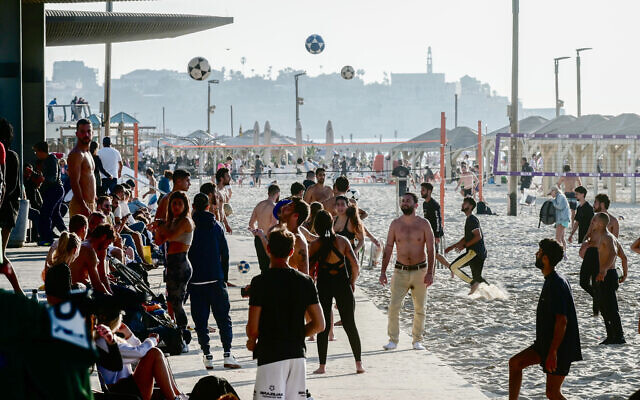
Israelis enjoy the beach in Tel Aviv on a hot winter day, January 21, 2023. (Avshalom Sassoni/Flash90)
Israelis are the happiest they’ve been in over a decade, the World Happiness rankings revealed on Monday, though the findings predated the widespread social upheaval over the government’s judicial overhaul program and therefore could not take it into account.
Israel’s 2023 fourth-place ranking, up from ninth last year, is its highest position since the UN-sponsored index began publication in 2012.
The list crowned Finland as the world’s happiest country for the sixth year running, with Afghanistan again the unhappiest, closely succeeded by Lebanon.
Israel’s Judiciary: Reform or Ruin?Keep Watching
The World Happiness Report, now in its 11th year, is based on residents of 137 countries’ own assessment of their situation, as well as economic and social data.
It assigns a happiness score on a scale of zero to 10, based on an average of data collected over a three-year period.
The survey utilized data collected between 2020 and 2022, before the government revealed its plans for judicial overhaul and the country became wracked by division and anger.
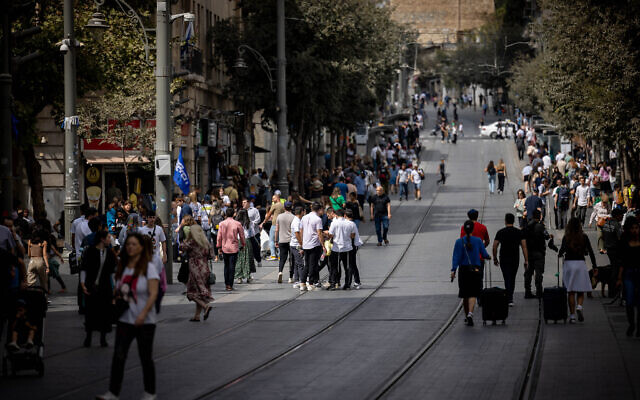
People walk on Jaffa street in downtown Jerusalem, on Sukkot eve, October 9, 2022. (Yonatan Sindel/Flash90)
Anat Fanti, a social science researcher at Bar Ilan University, said that if the survey had been conducted after the judicial overhaul was revealed, “its results would be different and Israel’s ranking would have been harmed.”
She told the Ynet news outlet that the ranking could be explained by a strong economic recovery following the coronavirus pandemic, as well as “the level of hope and optimism among some populations as a result of the broad unity government” led by former prime ministers Naftali Bennett and Yair Lapid, though that government was despised by many in the right wing.
The latest edition of the index was the first to rank Russia and Ukraine since the outbreak of war in February 2022. In the 2023 report, Russia rose ten places to 70th, and Ukraine increased from 98th in 2022 to 92nd in 2023.
The United States improved by one place to 15th, while France dropped one spot to 21st. The Palestinian Authority was placed 99th.
As well as a personal sense of well-being, the happiness index takes account of GDP, social support, individual freedom and levels of corruption, measured through Gallup polls conducted in each country.
War-traumatized Afghanistan, already bottom of the table, has seen its humanitarian crisis deepen since the Taliban retook power in 2021.

A woman passes a city sign in Helsinki, Finland, Friday, May 13, 2022. (AP Photo/Martin Meissner)
Northern Europeans once again dominated the top spots — with the Finns, Danes and Icelanders forming the top three.
The report raised some eyebrows when it first placed Finland at the top of its listings in 2018.
Many of the Nordic country’s 5.5 million people describe themselves as taciturn and prone to melancholy and admit to eyeing public displays of joyfulness with suspicion.
But the country of vast forests and lakes is also known for its well-functioning public services, ubiquitous saunas, widespread trust in authority and low levels of crime and inequality.
AFP contributed to this report













